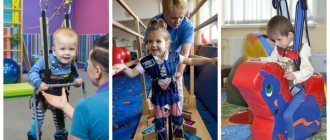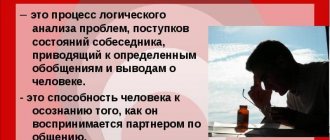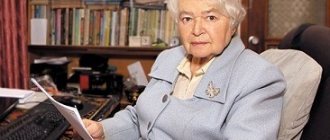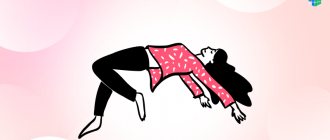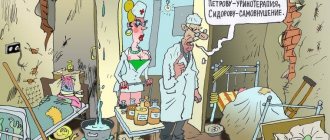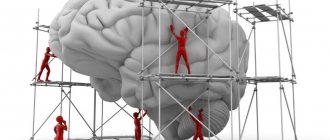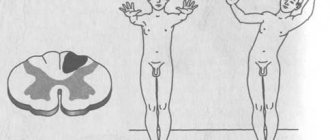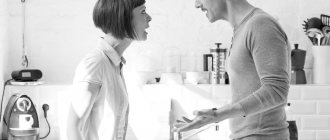Biofeedback (BFB) can improve the effectiveness of treatment and rehabilitation programs. Biofeedback therapy is widely used in modern medicine in the treatment of somatic, psychosomatic and neurological pathologies.
The biofeedback method is used by specialists at the Yusupov Hospital and helps a person use the body’s hidden capabilities to achieve the goal of treatment or recovery.
Biofeedback method
Beautherapy in Moscow is used by modern specialists for paresis, attention deficit hyperreactivity disorder, neuritis, and also after removal of plaster. To carry out biofeedback therapy, two components are required: software and a special biofeedback therapy device. This device contains sensors that record breathing rate, heart rate, and brain signals. The signals received from the sensors are then converted into the form necessary for PC recognition.
The method of functional biofeedback with feedback is used by rehabilitation doctors and neurologists at the Yusupov Hospital. During the procedures, European equipment is used, which is distinguished by the accuracy of the results and high speed of data processing.
Biofeedback therapy in Moscow
The Yusupov Multidisciplinary Hospital is a modern medical institution that provides not only effective treatment, but also high-precision diagnosis, recovery and prevention of diseases. Biofeedback therapy, the price of which varies depending on the pathology, is used by specialists at the Yusupov Hospital Resolution Center.
Experienced neurologists, therapists, traumatologists, and rehabilitation specialists create an individual therapy program for each patient aimed at eliminating the root cause of the pathology. The procedures offered by specialists at the Yusupov Hospital Rehabilitation Center are an optimal complement to drug therapy. Thus, in the absence of contraindications, biofeedback therapy is performed for headaches.
Diseases and their prevention
Broncho-obstructive syndrome , bronchial obstruction syndrome is a set of clinical signs resulting from a total narrowing of the lumen of the bronchi. Narrowing of the lumen of the small bronchi and focusing of exhalation leads to whistling sounds. Clinical manifestations of biofeedback consist of prolongation of exhalation, the appearance of expiratory noise (wheezing), attacks of suffocation, participation of auxiliary muscles in the act of breathing, and unproductive cough. With severe obstruction, the respiratory rate increases, fatigue of the respiratory muscles develops, and the partial tension of blood oxygen decreases.
Causes of biofeedback in children.
In children of the first year of life, BOS occurs:
- With aspiration of a foreign body.
- If swallowing is impaired (rabies).
- Due to congenital anomalies of the nasopharynx.
- With a fistula in the wall of the trachea or bronchi.
- For gastroesophageal reflux.
- For developmental defects of the trachea and bronchi.
- For hypertension in the pulmonary circulation due to insufficient cardiovascular activity.
- For respiratory distress syndrome.
- With the mild form of cystic fibrosis.
- For bronchopulmonary dysplasia.
- For immunodeficiency conditions.
- Due to intrauterine infection.
- From passive smoking.
- During an attack of bronchial asthma.
- For rhino-syncytial respiratory viral infection (RSVI).
In children 2-3 years old, BOS may occur for the first time due to:
- bronchial asthma,
- rhino-syncytial respiratory virus infection (RSVI)
- foreign body aspiration,
- migration of round helminths,
- bronchiolitis obliterans,
- congenital heart diseases,
- hereditary diseases,
- heart defects with hypertension in the pulmonary circle,
- ARVI with obstructive syndrome.
In children over 3 years of age, the main causes of biofeedback are:
- Bronchial asthma,
- Congenital and hereditary respiratory diseases:
- cystic fibrosis,
- ciliary dyskinesia syndrome,
- malformations of the bronchi.
- Foreign body aspiration.
- ARVI with obstructive syndrome.
It can be noted that in the evening, when the clinic is no longer open, there are in 99% only three reasons for the sudden onset of biofeedback, which threatens the life of a child at home:
1. Foreign body aspiration - 2%.
2. Viral or infectious bronchitis (bronchiolitis) - 23%;
3. Attack of bronchial asthma - 74%.
Parental tactics for biofeedback in children.
1. If, against the background of full health, asphyxia and biofeedback suddenly occur while the child is eating or while playing with small toys, all measures must be taken to remove the object on which the child could choke and, at the same time, urgently call an ambulance.
2. If signs of biofeedback suddenly appear in a child with ARVI (high temperature, runny nose, cough, intoxication), you need to think about worsening the course of the infectious disease and call an ambulance to take the child to an infectious diseases hospital where there is an intensive care unit.
3. If biofeedback occurs against the background of an obsessive paroxysmal dry cough, runny nose and normal or low-grade fever in a child with bronchial asthma, you need to think about an attack of bronchial asthma. And if parents are unable to relieve the symptoms of bronchospasm themselves and transfer the dry cough from a dry cough to a wet cough with sputum, then they need to seek help from an ambulance in order to eliminate an attack of bronchial asthma at home using a series of injections.
If within a few days it is not possible to bring the child out of an exacerbation of bronchial asthma, hospitalization in a somatic hospital with an intensive care unit is indicated.
Tactics of an emergency physician at the prehospital stage for biofeedback in a child.
1. In the presence of asphyxia and an extremely serious condition of the child, which arose suddenly, against the background of complete health, immediate intubation and transfer to artificial ventilation are indicated. And emergency hospitalization to the nearest hospital, where there is an intensive care unit in the emergency department.
2. If there are no signs of asphyxia or foreign body aspiration, and the child also does not have a diagnosis of bronchial asthma, the doctor must quickly determine what caused the BOS in the child: infection or allergy. After determining the reason, act according to the nature of the established diagnosis. When establishing an allergic cause, you must act as if you were dealing with an attack of bronchial asthma. When establishing the infectious nature of BOS, act accordingly.
The influence of biofeedback on the development of bronchial asthma in children.
There is an opinion, not only among practicing doctors, but also among many scientific researchers involved in studying the problems of diagnosing bronchial asthma in children, that repeated biofeedback of an infectious nature is a high risk factor for developing bronchial asthma. This, according to the author of the article, is a very harmful misconception that is dangerous for the health of a child already suffering from bronchial asthma. Because doctors mistakenly regard bronchial asthma attacks as biofeedback of an infectious nature. With all the ensuing consequences.
Methods for preventing biofeedback in children.
The real opportunity to reduce the number of asthma in one child, and therefore in all children in general, is to promptly recognize the child’s bronchial asthma and take such measures and organize such treatment so that his attacks begin to occur less frequently.
Head of the children's clinic Pung K.V.
Biofeedback for facial nerve neuritis
The method of biofeedback for a broken leg has been sufficiently developed, as well as for diseases of the musculoskeletal system. This technique is also successfully used for lesions of parts of the brain. Muscle training using biofeedback allows the patient to learn how to perform a movement, which is reinforced and reproduced in the future.
At each session, rehabilitation doctors at the Yusupov Hospital select an individual load for the patient, which allows for gradual muscle recovery. In addition, biofeedback therapy is combined with other techniques to achieve a positive result.
Why is correct posture important for a child?
Posture is a flexible concept that combines statics, mechanics, gait, and activity. While body position is static at rest and during gait, the way the body moves in space and time during activity consists of both static and mechanical movements. Postural control is the positional control of the entire body in space for balance and orientation. Poor posture is associated with accelerated degeneration of the intervertebral discs, as well as damage and displacement of the vertebrae, which leads to compression of the nerve roots. This compression of the nerve root can lead to radicular symptoms such as sensorimotor deficits and pain in the affected areas. Therefore, poor posture can lead to complications related to the spine and its surrounding structures. Poor posture can be caused by fatigue, poor muscle tone or mental health. On the other hand, poor posture itself can cause fatigue, poor muscle tone and mental health problems. Therefore, posture itself can serve as both an indicator of the child’s health status and be the key to its harmonious development.
Foot paresis: biofeedback for recovery
With paresis, patients' motor skills are impaired. A medical treadmill with biofeedback, the price of classes for which is calculated by specialists at the Yusupov Hospital for each patient individually, allows you to restore walking skills.
Movement therapy offered by specialists at the Yusupov Hospital Rehabilitation Center is safe. In addition, the biofeedback method is also used in recovery after plaster cast. The devices used for this procedure are distinguished by their functionality and high accuracy of results.
Methodology for using BOS-IP
The doctor can work with the patient individually or gather a group of up to eight people. The patient must sit or lie down during the session. Practice has shown that exercises in a sitting position are better remembered and the acquired skills are then much easier to transfer into everyday life. Before the start of the session, the psychotherapist conducts conversations, first explanatory, and then simply learns about the condition and well-being of the patients. Training lasts no more than half an hour. Conversations take approximately 15-20 minutes. Trainings should be conducted 2 to 5 times a week. The general course usually ranges from 10 to 15 lessons.
Biofeedback after a fracture
When the musculoskeletal system is damaged, muscle function is impaired. The biofeedback method for ankle fractures and other injuries eliminates the consequences of prolonged immobilization of the limb. Restoration of impaired function occurs in the rehabilitation center of the Yusupov Hospital according to an individual program.
Biofeedback after a fracture of the radius is aimed at strengthening the muscles. Biotraining occurs in several stages. Thus, at the initial stage, the patient develops an optimal state for biofeedback therapy. This is followed by classes using biofeedback equipment. Consolidating motor skills is the final stage of rehabilitation.
Biofeedback therapy in gynecology
Biofeedback therapy for women in Moscow is aimed at strengthening intimate muscles. With insufficient or increased muscle tone, a number of delicate problems arise:
- urinary incontinence caused by a stressful situation;
- injuries and ruptures during labor;
- genitourinary system infections;
- sexual dysfunction;
- prolapse of the walls of the vagina and uterus.
Biofeedback therapy helps cure urinary incontinence and other problems by helping women learn self-regulation. So, during the procedure, a sensor is placed in the vagina to detect muscle contractions. The information obtained allows you to identify active muscles.
Treatment
“Bolnichnaya Clinic” offers an Elite plan for pelvic floor rehabilitation!
Your treatment plan will depend on the severity of the disorder.
If pelvic floor dysfunction is mild or moderate, then it is possible to cope with regular training of the intimate muscles.
Basic training methods:
- Kegel exercises. The technique involves contracting, holding and relaxing muscles at different frequencies and intensities.
Kegel exercises are often ineffective, especially for beginners. Since about 70% of women do them incorrectly, using the wrong technique or contracting the abdominal and buttock muscles instead of the vaginal muscles.
It is very important before starting a workout to make sure that it is the pelvic floor muscles that are involved. Therefore, it is important to carry out the first exercises under the supervision of a doctor using a special device.
- Special individual simulators enhance the effect. There is a wide range of them - from special balls to electrical stimulators. The situation here is the same as with other muscles of the body - it is much more effective to pump up the arm muscles with dumbbells than just doing it. But don’t rush to start self-studying!
Selecting the necessary gadget and making sure that you use it correctly should only be done under the supervision of a doctor, because the wrong choice of exercise equipment or the wrong technique for using it can only harm your muscles.
The biofeedback method of biofeedback combined with electrical stimulation of the pelvic floor muscles is recognized as the most effective.
This is a method of absolutely harmless and effective restoration of weakened pelvic floor muscles, teaching them to work correctly - that is, to contract at the moment when it is necessary and with the force with which it is needed.
The biofeedback method (BFB) significantly outperforms even the most diligently performed perineal muscle exercises and eliminates the need for surgery for many patients.
What diseases can be cured?
The list of problems that can be solved is very wide:
- Stress urinary incontinence (stress urinary incontinence).
- Overactive bladder or urge urinary incontinence.
- Initial stages of prolapse of the uterus and walls of the vagina, bladder and rectum; prevention of severe prolapse in the future
- Postpartum changes in the pelvic floor, for example, expansion of the vagina, accompanied by a lack of satisfaction from sexual intercourse in both partners.
- Female sexual disorders.
- Interstitial cystitis and a number of cases of pelvic pain syndrome.
- Incontinence of gas and/or stool
biofeedback method will be useful not only for women, but also for members of their families, as it helps with conditions such as:
- Postoperative urinary incontinence after prostatectomy, transurethral resection of the prostate (TURP) and open adenomectomy (transvesical, retropubic) for benign hyperplasia or prostate adenoma in men.
- Overactive bladder or urinary incontinence in men.
- Chronic prostatitis and chronic pelvic pain syndrome.
- Interstitial cystitis.
- Erectile disfunction.
In the field of pediatric urology, the biofeedback method will help a small patient overcome the following ailments:
- Nocturnal enuresis, or involuntary urination during sleep
- Overactive bladder and urge urinary incontinence.
Biofeedback therapy in Moscow: prices
Biofeedback therapy for migraines in Moscow is a popular service, as is the case for women’s diseases. The Yusupov Hospital has created comfortable conditions for patients to stay, so each patient can find out the cost of services after a free consultation.
In addition, the biofeedback method after removing the cast from the ankle is successfully used by specialists from the rehabilitation center of the Yusupov Hospital. Experienced rehabilitation doctors offer patients high-quality and affordable procedures, which use European equipment.
Why is stress dangerous?
Stress can disrupt the smooth life of a person of any age, social status and financial situation. Any changes in the usual way of life - both negative and positive - can cause a strong shock. Getting married, for example, can lead to no less stress than illness of a loved one, divorce, loss of a job, moving to another city or even to a new apartment.
Prolonged stress (for example, from constant overwork and excessive responsibility at work, family problems) is usually called “pre-disease”: if left untreated, it will certainly develop into serious health problems and can also lead to death.
The fact is that as emotional stress increases, a person’s adequacy of perception of reality sharply decreases. Thus, stress suppresses a person’s ability to find a way out of a difficult situation. As an analysis of various cases of death in extreme situations shows, most of them simply could not find their only chance to survive.
“ BFB ” is a method of therapy that uses the body’s hidden reserves. The purpose of the method is to develop a person’s self-regulation skills. In our clinic, treatment of neurological and many other diseases using biofeedback therapy is carried out by a highly qualified doctor - neurologist, neurophysiologist with many years of experience . With the help of training under the guidance of a competent specialist, patients will learn to relax, cope with fears, depression and fatigue.
Biofeedback therapy: reviews
There are many reviews about biofeedback therapy on the Internet. However, highly qualified specialists from the Yusupov Hospital, who regularly improve their skills and study innovative technologies, can explain in more detail what biofeedback is.
Biofeedback therapy, reviews of which are positive, is also applicable to the pelvis; it helps strengthen muscles and allows you to solve a number of problems. In addition, exercise therapy instructors offer patients physical therapy classes to tone muscles.
Biofeedback therapy for headaches, ADHD, paresis and other disorders is an indispensable method that helps restore activity and improve condition. To get advice and make an appointment with specialists at the rehabilitation clinic, please contact the staff at the Yusupov Hospital.
Diagnostics
A doctor diagnoses pelvic floor muscle dysfunction.
After discussing the symptoms, the patient is asked to fill out specially designed questionnaires to assess the degree of decrease in quality of life due to existing problems.
Next, a gynecological examination is carried out, during which signs of muscle weakness are identified and the degree of prolapse and stretching of the pelvic floor muscles is assessed.
Then the study is complemented by an ultrasound of the perineum, which makes it possible to identify early, preclinical signs of prolapse of the pelvic organs.
The study ends with determining the strength of muscle work using a special apparatus. This modern method gives an idea of which specific pelvic floor muscles are damaged.
